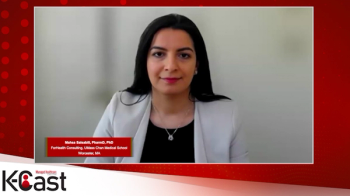
Multi-Condition Approach Can Improve Results Across Conditions, Company Argues
An integrated approach not only leads to better results, but also better value, in both the short- and long-term, according to DarioHealth.
The proliferation of new health-focused smartphone applications has created new opportunities for patients to track and improve their health, but one company argues a less-is-more approach is a better way to help patients with multiple comorbidities.
New data presented by the digital therapeutics firm
Dario’s app can help patients monitor their blood glucose levels, but in the new report, they showed that it can also be effective at combating obesity. In the study, the company analyzed data from 715 people with body mass indexes (BMIs) of at least 30 kg/m2. After 12 months, the cohort had reduced its BMIs by an average of 2.8 units, with an average weight loss of 7.4%, the company said. Moreover, a subgroup of 108 patients with both a BMI over 30 and high-risk blood glucose readings above 180 mg/dL was able to reduce their weight by 4.9% on average, and their average blood glucose by 16.1%.
“It’s hard enough to drive the engagement needed for meaningful behavior change in one solution, but when consumers are asked to use multiple solutions, it becomes nearly impossible,” said Manejwala, a co-author of the study. “By unifying the experience, people can get support that’s relevant to them, for the most common conditions, in a way that’s easy, intuitive, and effective.”
Aside from user-friendliness, though,Manejwala said using a range of different digital therapeutics to treat a range of diseases can also lead to practical problems.
“As a (perhaps oversimplified) example, if you have chronic knee pain but also pre-diabetes, and the pre-diabetes solution suggests running or jogging—well, that’s not going to work for you,” he said. “...In the case of a multi-condition or whole health approach, the experience is integrated and unified, and that drives better engagement and outcomes.”
Platforms like the Dario app, Manejwala said, have the capability to modify long-term behavior and that translates into lower costs over the long term. The study noted that weight loss in excess of 5% is believed to be necessary to spark beneficial change in A1C, lipid levels, and blood pressure in this patient population.
Manejwala said the health benefits associated with multi-condition approaches ultimately translate into better value, too. DarioHealth launched its app with a direct-to-consumer model, but he said the company two years ago added enterprise channels allowing patients to access the app through employers, health plans, providers, and other partners. He said those channels are expected to be the company’s largest growth area going forward. DarioHealth has also signed an agreement with drugmaker Sanofi S.A. to work on co-development of new solutions to integrate into DarioHealth’s platform.
There are currently no plans to utilize a prescription model for their therapeutic, though Manejwala said physicians often recommend their product in the same way they would any “over-the-counter” product. However, he believes the multi-condition approach offers a model that is a win-win for patients and payers alike.
“Given that our whole-health solution has best-in-class outcomes in each condition, but delivers in a simple unified way across conditions, this is extremely attractive to our payer customers and is also why we are seeing so much growth in this market,” he said.
Newsletter
Get the latest industry news, event updates, and more from Managed healthcare Executive.



















































